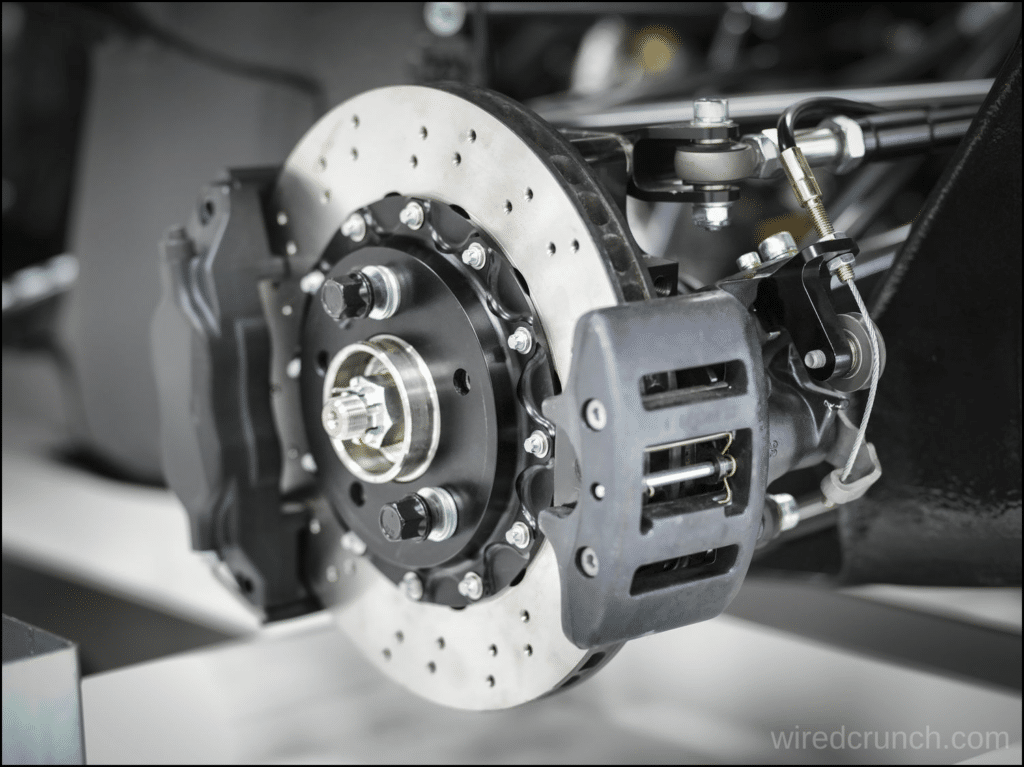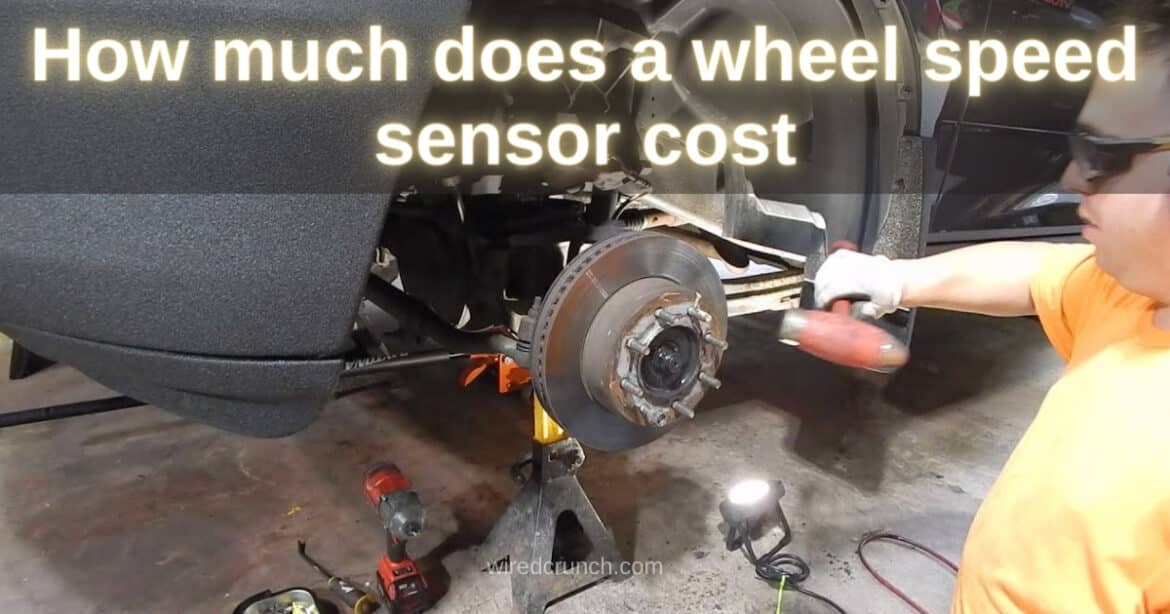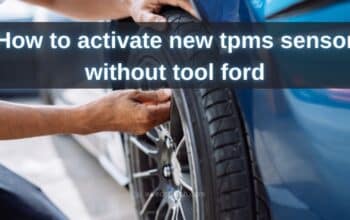Discover how much a wheel speed sensor costs and learn about its crucial role in your vehicle’s ABS and traction control systems. Find out typical prices and what factors can affect replacement costs. When it comes to maintaining a vehicle’s safety and performance, one crucial component is the wheel speed sensor, often referred to as the ABS sensor or ABS brake sensor.
These sensors play a vital role in monitoring the rotational speed of each tire and reporting this data to the car’s Engine Control Module (ECM). Every wheel on a vehicle spins at a slightly different speed, and the ECM relies on the information from these sensors to determine if any wheel is locking up.
From my experience, understanding the cost of wheel speed sensors is important for any car owner, not just from a financial perspective but also for the overall maintenance and safety of the vehicle. These sensors work in tandem with the vehicle’s advanced electronic systems to ensure optimal driving dynamics, improve fuel efficiency, and reduce gas emissions.

In this article, we’ll dive into the specifics of wheel speed sensor costs, exploring the factors that influence their pricing and why investing in quality sensors can save you money and enhance your driving experience in the long run.
Table of Contents
Wheel speed sensor cost for replacement
In my experience, the wheel speed sensor cost can be a concern for car owners. These sensors, also called ABS sensors, are essential for the anti-lock braking system (ABS) to work properly. They help prevent your brakes from locking up, enhancing safety on the road. Usually, ABS sensors don’t fail during regular driving. But sometimes, factors like corrosion or damage to the wiring or sensor itself can cause issues, leading to faulty readings or no readings. When this happens, replacing the sensor becomes necessary. Typically, you can go around 100,000 kilometers before needing a replacement.
However, the cost can vary depending on your car’s make and model. On average, installing a new ABS sensor can start at $375 and go up to over $600. If you live in dusty regions or coastal areas with salty air, you might encounter problems more frequently due to increased wear and tear.

What is a wheel speed sensor and how does it work?
Understanding the wheel speed sensor cost is essential for vehicle maintenance. These sensors are vital components of your car’s anti-lock braking system (ABS) and traction control system. Each vehicle has four-wheel speed sensors, one for each wheel. Their main job is to detect how fast each wheel is spinning. This information is continuously monitored by one of your car’s computers.
Wheel speed sensors operate using magnets. A metal ring with ridges around the edge is attached to each wheel hub. Nearby mounted magnets in the wheel speed sensor detect these ridges and convert the resulting magnetic field into an electrical signal.

This signal is then sent to the computer for analysis. The computer decides whether to activate the ABS or traction control unit based on the wheel’s speed. Understanding the function and potential wheel speed sensor cost is crucial for maintaining your vehicle’s safety and performance.
Signs of a Faulty Wheel Speed Sensor
Here are the signs of a faulty wheel speed sensor:
- The ABS warning light illuminates the dashboard.
- The traction control system (TCS) warning light stays on.
- Wheels locking up while braking.
- A fault code is stored.
- Reduced traction on slippery roads.
Each wheel can have one to four ABS sensors depending on the type of wheel. These wheel speed sensors are crucial for the ABS to work correctly. They help the ABS control unit know when to unlock the brakes.
If your wheel speed sensors fail, you can replace them. You can find new wheel speed sensors online or in physical stores. Now that you know the types of wheel speed sensors and the signs of a bad one, make sure any used car you buy has fully functional wheel speed sensors.

Causes of Wheel Speed Sensor to Stop Working
Now that we know the types of wheel speed sensors, we understand how important they are for a vehicle’s optimal functioning. Understanding what causes wheel speed sensors to malfunction helps us identify damage and take steps to prevent the problem.
- Heavy contamination or debris can cause failure.
- Broken wiring can disrupt signal generation and detection.
- Internal short circuits, due to voltage issues, can cause failure.
- Increased wheel bearing clearance can lead to problems.
- Mechanical damage to the wheel encoder can affect the sensor.
- External damage can impair the speed sensors.
Types of Wheel Speed Sensors
There are two types of wheel speed sensors: active sensors and passive sensors.
Active Wheel Speed Sensors
Active Wheel Speed Sensors are a type of sensor that works differently from passive sensors. They need a voltage to start working and send a signal out. This signal goes to the ABS control unit. These sensors are also called magneto-resistive because they have a part that senses magnets or electricity. They work better than passive sensors because they can send more accurate signals even at slow speeds and tell which way the wheel is turning.

Passive Wheel Speed Sensors
Passive Wheel Speed Sensors, also known as inductive or variable-reluctance magnet sensors, work differently from active sensors. They don’t need extra voltage to start working. They sit near the impulse wheel, which is linked to the drive shaft. When the impulse wheel spins, the sensor notices the speed change as the teeth move past. This change makes the magnetic flow change too.

The sensor then makes an AC signal with different frequencies based on how fast the wheel is moving. The ABS control unit changes this signal into a digital one. Because of this, the front or rear wheel sensors can work with or without voltage from the ABS control unit. This helps the ABS sensors keep the car from sliding or skidding when you use the brakes.
Note: Make sure to keep the sensors clean to prevent them from getting damaged.
Conclusion
Wheel speed sensors are important for your car’s safety and performance. They help systems like ABS work properly. Keeping them clean and well-maintained is essential. While the wheel speed sensor cost can vary, investing in good sensors and regular maintenance is worth it to ensure your car runs smoothly and safely.
Frequently Asked Questions (FAQs)
Is it OK to drive with a bad wheel speed sensor?
Driving with a malfunctioning wheel speed sensor is possible, but not advisable. The ABS, a critical safety system in your vehicle, relies on functional wheel speed sensors to operate correctly. Without them, the ABS cannot function properly, compromising your safety.
Can you clean a wheel speed sensor?
If necessary, clean the sensor with warm, soapy water to remove dirt, ensuring it dries completely before reinstalling. Use a wire brush or file to carefully remove any tough rust or dirt, but proceed with caution to avoid damaging the sensor with excessive cleaning.
What happens if I unplug my ABS sensor?
Your brake system will still operate normally if you remove the ABS fuse, but the ABS itself won’t be able to control your brakes. With the ABS disabled, there’s an increased risk of your brakes locking up.
How long do speed sensors last?
Generally, wheel speed sensors are designed to last the lifetime of the vehicle. However, their location subjects them to significant mechanical stress within the braking system. They can also be impacted by external factors like harsh weather and physical damage from road debris.
How much does a wheel speed sensor cost in Canada?
Replacing an ABS sensor in Canada can cost differently based on your car’s type, where you are, and where you get it fixed. Usually, it can be between $150 to $300 for both parts and labor. The repair might take about 1-2 hours.
READ MORE :
How Much Does a Mass Air Flow Sensor Cost
How Much Does Replacing Oxygen Sensor Cost
How Much Does Camshaft Sensor Repair Cost
How Much Does it Cost to Replace Throttle Body Sensor
I have a professional background with a Diploma in Information Communication Technology, which brings a blend of technical expertise and creative flair to my writing. Currently, I serve as a writer for Creativeoutrank LLC and contribute to their various websites.
I’m writing is a ref... Read more



